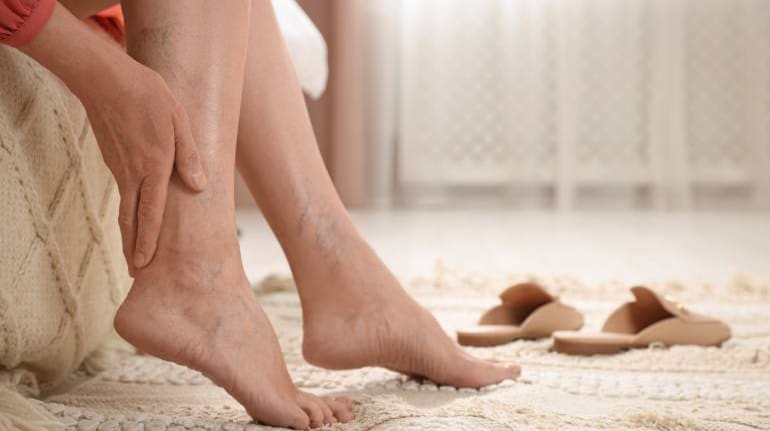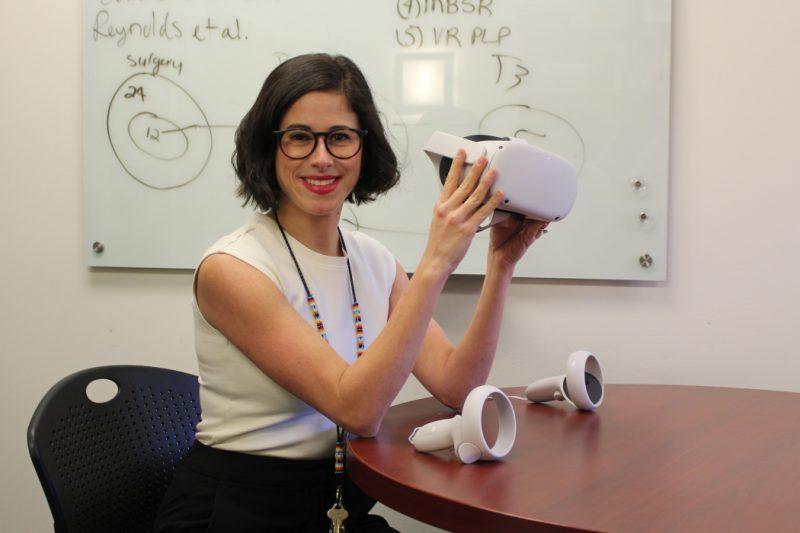
Varicose veins: Spider veins may be observed in the early stages. They are small, dilated and may be red or purple coloured (Image: Canva)
Are you finding it difficult to walk due to pain in your lower limbs, especially your calves? Or have you noticed prominent veins on the legs? If so, you may have varicose veins.
Dilated and tortuous veins are known as varicose veins. They may be seen in the veins of the lower limb, oesophagus and the haemorrhoids. The blood in the veins of the lower limbs moves against gravity towards the heart. Normal veins have valves in them that assist this flow. If there is any incompetency of these valves, the veins may become dilated and tortuous.
Risk factors:
The risk factors for the development of varicose veins include persons with jobs that entail long-standing hours, like surgeons, conductors, or chefs, among others. Pregnancy and the presence of abdominal tumours can also lead to varicose veins. It can be observed in people with ovarian cysts, pelvic cancers, fluid in the abdomen (called ascites) and deep vein thrombosis. Those taking oral contraceptives may also be susceptible to this condition.
While varicose veins can affect persons of any age group, they are especially seen in middle-aged individuals. Women are more likely to be affected than men. Pain is one of the most common symptoms seen in this condition. It aggravates on standing for long hours and may be relieved on lying down. Spider veins may be observed in the early stages. They are small, dilated and may be red or purple coloured.
Complications of untreated varicose veins:
If not treated timely, it may form a varicose ulcer on the inner aspect of the ankle. A minor injury to the dilated veins can result in profuse bleeding (haemorrhage). Inflammation can occur, making the skin red and swollen. Pigmentation, eczema and calcification of the vein can also be seen. In long standing cases of varicose veins, the patients may begin walking on their toes to relieve pain. This leads to the equinus deformity.
Here is what you can do to prevent the varicose veins from worsening:
Story continues below Advertisement
Daily exercise: The leg muscles are responsible for pushing the blood back to the heart. For this reason, the calf muscle (the gastrocnemius) is also known as the second heart of the body. While you may be exasperated by leg days (if you are a gym buff), leg exercises may help prevent the formation of new dilated and tortuous veins.
Work adaptations: If your work requires long-standing hours, finding alternatives to perform your job without compromising is best. For example, while cooking, you may sit and cook or take short breaks where you can sit for some time before continuing.
Use a pillow: A pillow may be kept under your knees while sleeping so as to elevate the legs and aid in the flow of blood, which is hampered due to the inconsistency of the valves. This can be a regular habit while sleeping to prevent further complications.
Compression stockings: The healthcare provider may recommend the use of compression stockings. The pressure these apply over the ankle and the lower leg helps the blood flow back to the heart.
If you notice any changes over the skin near the varicose veins or the development of an ulcer, contact a medical professional.
Varicose veins causes, symptoms, precautions: Leg exercises can prevent formation of dilated veins - Moneycontrol
Read More

No comments:
Post a Comment